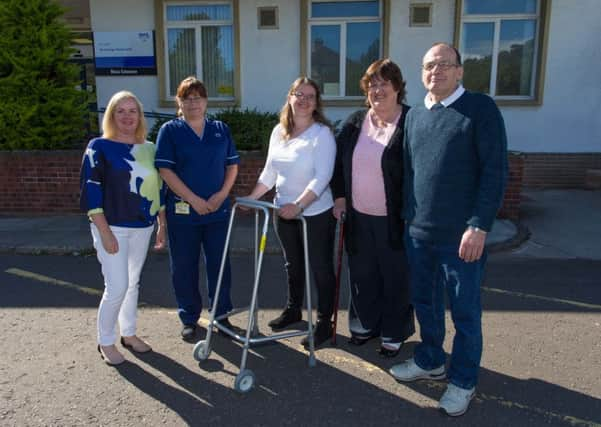Crash survivor walks the distance


Beverley Donaldson, now 32, who had been getting off a bus in Cadham and was walking towards the town centre when she was hit by a car on the Leslie Road, walked across the Forth Road Bridge on September 6 to raise funds for the unit that helped nurser her back to health.
Beverley was 17-years-old when she was rushed to Queen Margaret Hospital in Dunfermline before being transferred to the Intensive Care Unit in the Western General in Edinburgh where doctors told her parents, Andrew and Gillian that she only had 48 hours to live.
Advertisement
Hide AdAdvertisement
Hide AdSuffering traumatic brain injury she stayed in the ICU for two weeks.
Later, Beverly was transferred to the George Sharp Unit in Cameron Hospital, Glenrothes where she remained for a further 13 months.
“That’s where they worked their magic on her, they got her talking and walking with a zimmer frame,” said dad, Andrew.
“She is now doing really well and thought it was time she gave something back by doing a sponsored walk over the Forth Road Bridge.”
Joined by friends and family she completed the walk across the bridge on September 6, managing to raise £900.
The money was donated as a thank you to all the staff at the George Sharp Unit who supported Beverly through her recovery.
“She managed it no problem and we are extremely proud of her.
“It is a complete miracle and she is achieving more and more everyday,” said mum, Gillian.
Beverley’s long journey has been an ‘inspiration’
Advertisement
Hide AdAdvertisement
Hide AdThe Sir George Sharp Unit provides a neuro-rehabilitation service to Fife as well as providing a service for those with physical disability due to neurological disability.
Beverley remained in the unit for 13 months undergoing physiotherpay and intense speech therapy using a machine with buttons - for yes and no - to help her communicate.
A few months later she continued to make progress - moving on to use a touch type computer so she could relay messages back and forth to her family.
Gillian said: “She’s come such a long way. She couldn’t even talk until one evening in March 2001 when her dad and sister and I went to visit her. I walked into her room and she said ‘hiya Mum’ and I burst into tears.”